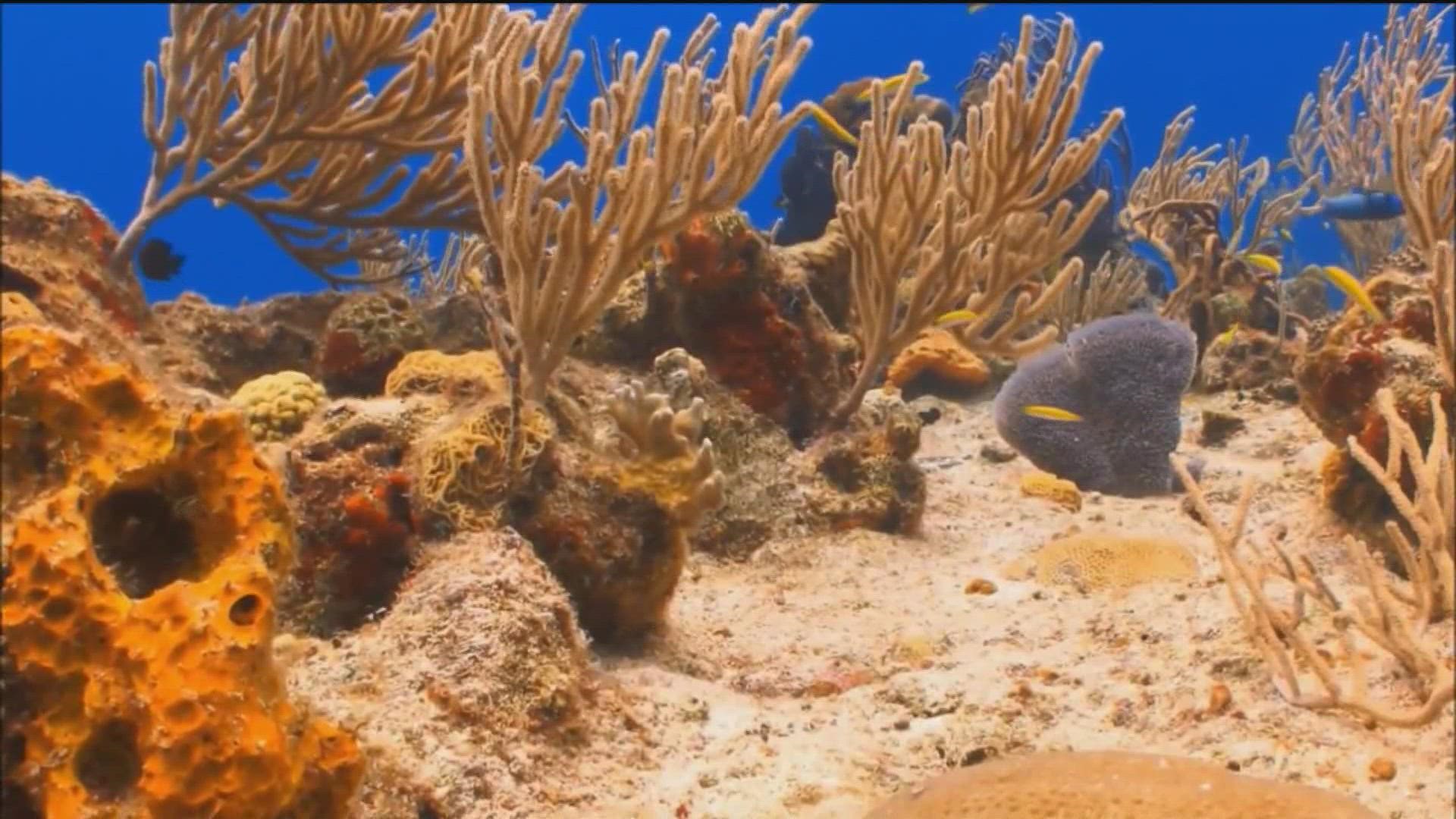SAN DIEGO — We hear a lot of stories about the environment that may seem like a lot of negativities or like we’re doomed.
That’s why as soon as I saw what researchers had discovered about our coral reef, I jumped at the chance to look into this for you and hopefully bring you something positive to provide hope.
“We bring images back to the lab and digitize them,” said Adi Khen. She is a PhD candidate working at Jennifer Smith’s lab at Scripps Institution of Oceanography.
She has gone through 1,500 Images and outlined the different species of coral, and she matches colors with the species. Her data collection turns into its own work of art. But what she does is far beyond magic with photoshop.
Khen’s work is helping researchers track progress and positivity. Signs of life and growth can be seen even after massive bleaching of coral reefs.
“It’s really inspiring,” said Khen. “It’s really rewarding and gratifying to work on a system that’s healthy despite climate impacts.”
The images she and several grad and undergrad students have gone through all come from Palmyra Island, an island in the Pacific Ocean that is only used by researchers.
“It’s teaming with life. Palmyra is intense, it can rain one minute; sun is out the next. It’s loud with birds and fish on the reef with huge abundance with life,” Khen said.
Scuba divers take images of the same spots of coral reef every year, the plots are half a meter, to see how the colonies changes over time.
“I actually know a lot of the individual colonies by heart, and I’ve been following them through time year after year. I get to watch them grow and change and I got to visit for first time in 2020 and it’s like visiting old friends,” said Khen.
With global warming events causing parts of the ocean to heat up, coral reef bleaching has made headlines since the early 2000’s.
It was around 2015 when Palmyra’s coral nearly died off. That’s when 90% of the reef was bleaching. But a year later, Khen points out the regrowth.
“Despite there being these big warm water events and coral bleaching, the reefs did bounce back,” said Jennifer Smith of Smith’s Lab and a professor at UC San Diego.
She explains the value they have on our planet, “They deposit rock as they’re growing, it creates barriers around islands, creates surf, they’re important for fisheries tourism and generate huge amounts of revenue.”
In the ocean – NOAA reports they make up less than 1% but are home to 25% of the world’s oceans species. And what this teams latest research has discovered is, when left untouched like at Palmyra coral can return to its healthy habitat.
“One of the most important things we can learn from this story of hope is, by managing we can give reefs a better chance at resisting these thermal assaults, that are going to happen in the future,” said Smith.
WATCH RELATED: How carbon dioxide is destroying the world's coral reefs and shellfish (March 2021)

